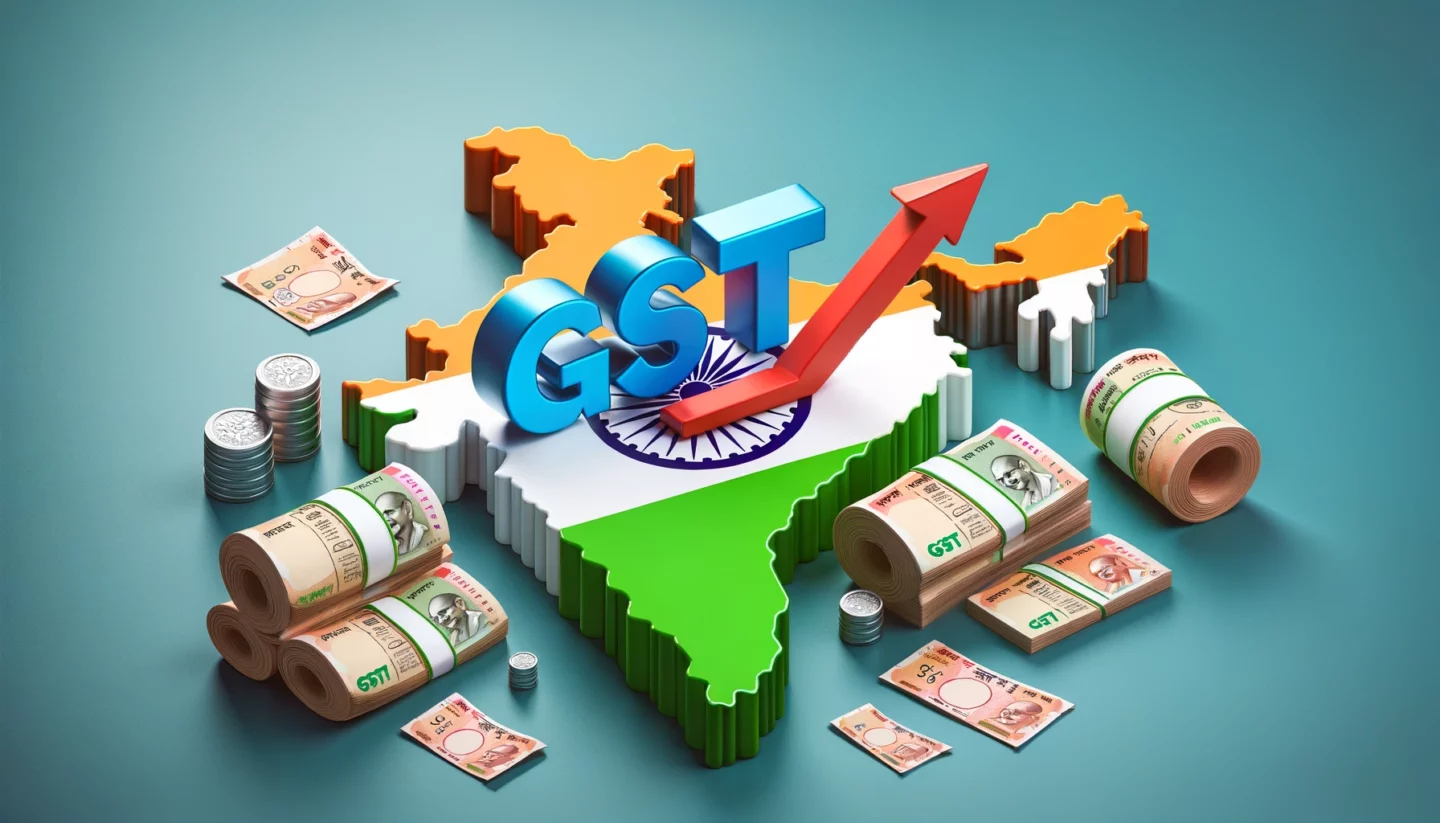Abatement in GST: Simplifying Tax for Businesses in India
- 20 Sep 24
- 15 mins

Abatement in GST: Simplifying Tax for Businesses in India
Key Takeaways
- Tax abatement under GST significantly reduces the tax burden on specific goods and services, making essential services more affordable for the public and supporting business competitiveness.
- The concept of tax abatement, deeply rooted in India's pre-GST era, has been streamlined and integrated into the GST regime, ensuring a smoother transition for sectors accustomed to specific tax reliefs.
- Abatement works by allowing a deduction from the total taxable value of goods or services, thereby lowering the effective GST rate applied and simplifying tax compliance for businesses.
- GST abatement is sector-specific, designed to support industries vital for the economy or public welfare, without allowing Input Tax Credit (ITC) on the abated value to prevent double benefits.
- Special provisions under GST, such as threshold exemptions and the Composition Scheme, offer relief and support to small service providers, reducing their compliance burden and tax liability.
India's taxation framework was highly complex before the introduction of the Goods and Services Tax (GST). Conducting business and fulfilling tax obligations became significantly simpler with the establishment of GST. It also produced a single market across the whole country. Among the diverse aspects of GST addressing different economic activities, tax abatement emerges as a crucial strategy intended to reduce the tax load on particular goods and services. This idea comes from before GST and has been changed and added to the GST system. It provides a more complex way to lower taxes that helps both companies and consumers.

Understanding Tax Abatement
Through tax abatement, tax authorities can enhance economic expansion and investment, aiding specific groups by reducing the taxes due on certain goods, services, or properties. Within the framework of the Goods and Services Tax (GST) in India, tax abatement serves as a mechanism to lower the effective rate of GST that applies to certain goods and services. This is achieved by allowing a deduction from the total taxable value, ensuring that the tax is levied only on a portion of the value.
Tax abatement has more than one goal: to lower the cost of important services, make taxes easier for businesses (especially in areas with complicated cost structures), and get people to follow the rules when it comes to taxes.
Within GST, the concept of tax abatement is crucial as it directly influences the amount of GST payable, thereby impacting the pricing, competitive edge, and profits of businesses utilizing these abatements. It's a strategic tool that strikes a balance between the need for the government to get money and the goals of economic growth and making sure that people can afford basic services.
The History of Tax Abatement
The history of tax abatement in India predates the implementation of GST. Before July 2017, India's tax structure was fragmented across multiple indirect taxes, including service tax, VAT (Value Added Tax), and excise duty, each with its own set of tax exemptions and abatements. These were designed to reduce the tax burden on certain sectors, promote industrial growth, and ensure that essential services remained accessible.
For instance, the service tax regime allowed abatements on various services like transport of goods by road, where the taxable value could be reduced to a fraction of the gross amount charged, acknowledging the inclusion of significant non-service elements in the cost.
With the introduction of GST, the concept of tax abatement was streamlined and incorporated into the new tax regime, albeit with a different approach. GST sought to create a more uniform and transparent tax structure, reducing the cascading effect of taxes and simplifying compliance. However, recognizing the importance of supporting certain sectors and making essential services affordable, the GST framework included provisions for abatement.
These provisions were carefully crafted, taking into account the input tax credits available, to ensure that the benefits of abatement were effectively passed on to the end consumer without compromising the integrity of the input tax credit system.
The shift to GST marked a major reform of the Indian taxation system, with tax abatement playing an essential role in easing the transition for sectors previously familiar with certain tax concessions. The evolution of tax abatement from the pre-GST era to its current form under GST is a testament to the Indian government's commitment to fostering an economic environment that is conducive to growth, equitable, and responsive to the needs of both businesses and consumers.
How Abatement Works?
In the context of the Goods and Services Tax (GST) in India, abatement works by reducing the taxable value of goods or services before the application of GST rates. This mechanism is designed to adjust the tax burden on certain goods and services, making them more affordable and ensuring that businesses can maintain competitive pricing. Here’s a closer look at how abatement functions within the GST framework:
| Step | Description |
|---|---|
| Determination of Taxable Value | The initial step involves identifying the taxable value of goods or services, which includes the transaction value plus any additional charges or fees. This amount represents what would typically be subject to GST. |
| Application of Abatement Percentage | After determining the taxable value, a predefined abatement percentage specific to the goods or services is applied. This percentage reduces the taxable value, effectively lowering the GST base. |
| Calculation of GST | With the abatement applied, the new, reduced taxable value is used to calculate the GST payable. The appropriate GST rate is applied to this amount, resulting in a lower tax obligation. |
| Compliance and Documentation | Businesses utilizing tax abatement must adhere to specific documentation and reporting standards set by GST regulations. This includes keeping detailed records of transactions eligible for abatement and accurately reflecting the reduced tax liability in GST filings. |
This table summarizes the process of applying abatement within the GST framework, highlighting the key steps and their respective descriptions.
Key Features of Abatement in GST:
- Sector-Specific: Abatement percentages and eligibility criteria are often specific to certain sectors or categories of goods and services. This targeted approach allows the government to support industries or services that are vital for the economy or public welfare.
- No Input Tax Credit (ITC) on Abated Value: In many cases, businesses cannot claim input tax credit on the portion of the value that has been abated. This is because the abatement is intended to account for the inclusion of non-GST elements (like labor in construction services) in the taxable value, and allowing ITC on such components could lead to double benefits.
- Simplifies Tax Calculation: Abatement simplifies the tax calculation process for businesses, especially in industries where determining the exact value of goods or services subject to GST is complex. By providing a straightforward percentage reduction, abatement makes compliance easier for taxpayers.
Types of Abatement
Tax abatement, a critical fiscal tool designed to stimulate economic development, attract investments, and support specific sectors, can manifest in various forms depending on the objectives it seeks to achieve and the context in which it is applied. Here's a look at the different types of tax abatement that can be encountered, especially within the framework of policies like those under the Goods and Services Tax (GST) in India and similar tax structures globally:
1. Property Tax Abatement

- Objective: To encourage development and investment in real estate, including residential, commercial, and industrial properties.
- How It Works: Property tax abatement reduces or eliminates the property tax bill for a specified period. This can be particularly effective in urban renewal projects or in attracting businesses to invest in certain areas.
2. Sales Tax Abatement
- Objective: To lower the cost of certain goods and services, making them more affordable for consumers or to support local businesses.
- How It Works: Sales tax abatement can exempt the entire sales tax or a portion of it on specific items, such as essential commodities, renewable energy equipment, or goods produced by small businesses.
3. Income Tax Abatement
- Objective: To attract individuals or corporations to invest or relocate, thereby stimulating economic growth.
- How It Works: Income tax abatement may offer reductions or exemptions on income taxes for businesses or individuals who meet certain criteria, such as investing in underdeveloped areas or creating a specified number of jobs.
4. GST Abatement
- Objective: To reduce the tax burden on certain goods and services, making them more affordable and ensuring fair taxation practices.
- How It Works: In the context of GST, abatement allows for a reduced taxable value on certain goods and services, thereby lowering the effective GST rate applied. This is often used in sectors where the value of goods and services includes significant non-taxable components, such as land in the construction industry.
5. Custom Duty Abatement
- Objective: To support domestic industries by making the import of raw materials or essential goods more affordable.
- How It Works: Custom duty abatement reduces or eliminates the customs duty on imported goods that are critical for domestic production processes, thereby lowering production costs and potentially making domestic products more competitive.
6. Sector-Specific Tax Abatement
- Objective: To support growth and development in specific sectors, such as renewable energy, technology startups, or agriculture.
- How It Works: This type of abatement provides tax incentives tailored to the needs of specific industries, such as tax credits for research and development in technology or subsidies for renewable energy projects.
7. Environmental Tax Abatement
- Objective: To encourage environmentally friendly practices and the adoption of green technologies.
- How It Works: Environmental tax abatements offer incentives for activities that have a positive environmental impact, such as the installation of solar panels, energy-efficient appliances, or the use of eco-friendly materials in construction.

- Objective: To encourage environmentally friendly practices and the adoption of green technologies.
- How It Works: Environmental tax abatements offer incentives for activities that have a positive environmental impact, such as the installation of solar panels, energy-efficient appliances, or the use of eco-friendly materials in construction.
Each type of tax abatement is designed with specific policy goals in mind, aiming to balance the need for tax revenue with the desire to stimulate economic activity, support strategic sectors, and achieve social objectives. The effectiveness of tax abatement policies depends on their design, implementation, and the broader economic context in which they are applied.
Benefits of Tax Abatements

Tax abatements offer several advantages that significantly impact both the economy and individual businesses. These benefits include:
- Reduced Cost for Consumers: By lowering the tax burden on goods and services, abatements can make essential services more affordable for the general public.
- Encouragement of Investment: Abatements can act as an incentive for businesses to invest in certain sectors or regions that are deemed important for economic development.
- Simplification of Tax Compliance: For businesses, especially in sectors where determining the exact taxable value is complex, abatements simplify the process of calculating tax liabilities.
- Support for Specific Sectors: Abatements can be tailored to support industries that are vital for the economy or are in need of assistance, helping to sustain jobs and promote sectoral growth.
Real-World Tax Abatement Examples
- Construction Industry: Real estate tax abatements are applied to under-construction properties to exclude the value of land from the taxable amount, as GST is not applicable to land. This reduces the overall tax burden on homebuyers and stimulates the housing market.
- Transport Services: Abatements in transport services, such as goods transport by road or air, account for the inclusion of fuel and other non-service elements, ensuring that GST is levied fairly on the actual service component.

Tax Abatement in Service Tax
Prior to the implementation of GST, the Service Tax regime in India also utilized abatements to reduce the tax burden on various services. For example, service providers in the transport and construction sectors could avail themselves of abatements that allowed them to pay tax on a portion of the total value of services rendered, acknowledging the mixed supply of goods and services within a single transaction. This principle has been adapted and continued under the GST framework, ensuring a smoother transition for businesses accustomed to such tax reliefs.
Special Provisions for Small Service Providers
Recognizing the unique challenges faced by small service providers, the GST framework includes special provisions that offer relief and support:
- Threshold Exemption: Small service providers are eligible for a threshold exemption, allowing them to avoid GST registration and taxation if their annual turnover does not exceed a certain limit. These special exemption are designed to reduce the compliance burden on small businesses.
- Composition Scheme: Small service providers can opt for the GST Composition Scheme, which allows them to pay GST at a reduced rate, simplifying tax compliance and reducing their tax liability. This scheme is particularly beneficial for small businesses that find it challenging to comply with the standard GST requirements.
Tax abatements and special provisions under GST reflect the Indian government's commitment to fostering an inclusive economic environment that supports growth across all sectors and sizes of businesses. By carefully balancing the need for revenue with the need to stimulate economic activity, these measures play a crucial role in the broader economic development strategy.
💡 In addition, if you want to pay your GST with Credit card, then download the Pice Business Payment App. The app allows you to make all business payments at the click of a button.
 By
By 


















